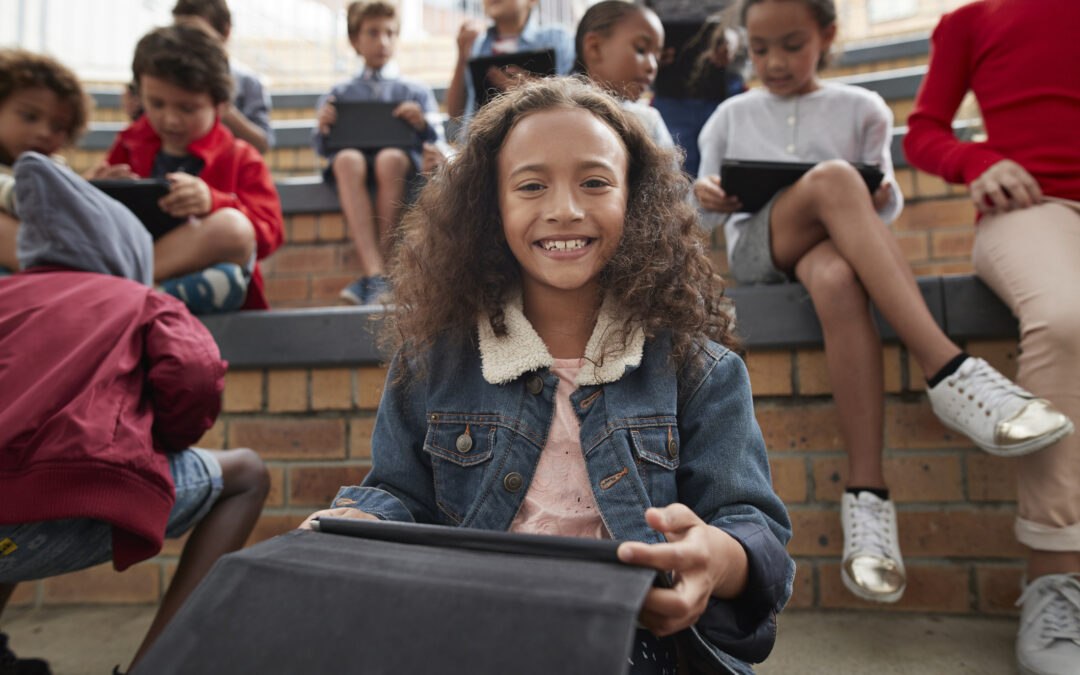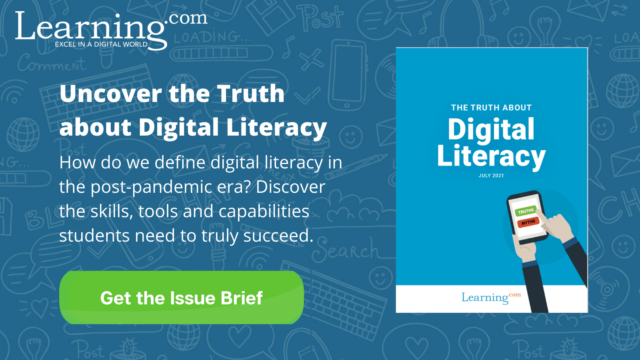In a world dominated by virtual interactions, being a responsible digital citizen has never been more crucial. Students today grow up with social media, online classrooms, and digital communication tools that make the internet an extension of their everyday lives. However, along with the privileges of constant connectivity come risks that can affect users’ privacy, safety, and well-being. Understanding digital citizenship and building strong digital literacy skills, therefore, provides a framework for students to use technology ethically and securely.
Parents, educators and policymakers alike recognize the importance of guiding young people in their online journeys. Whether it’s identifying reliable sources, respecting intellectual property rights, or steering clear of cyber threats, the principles of digital citizenship are key to helping students become informed, empathetic, and resilient participants in our digital society. In this article, we dive into the meaning of digital citizenship, the primary components of digital citizenship education, and offer resources and ideas for promoting these critical skills among students of all ages.
Understanding the Broader Context of Digital Citizenship
In today’s interconnected world, technology plays a central role in our personal and professional lives. People of all ages, especially students, rely on digital tools for communication, learning, self-expression, and entertainment. While the benefits of modern technology are undeniable—ranging from easier access to information to more dynamic collaboration across vast distances—these advances also present new challenges.
As students spend more time online, educators and families find themselves in a position where they must help children navigate a complicated digital environment. This is where digital citizenship becomes crucial. The concept extends beyond remaining safe online; it also involves cultivating a thoughtful, ethical and respectful presence in digital spaces.
What is Digital Citizenship?
Digital citizenship is the ability to use technology responsibly, safely and respectfully. It refers to the ability to protect private information online, mitigate risks associated with cyberthreats or online threats, and utilize information and media in a respectful, knowledgeable and legal way.
Digital citizenship continues to evolve as technology becomes more complex, but the underlying theme of digital citizenship remains the same: staying safe and responsible when using digital technology.
This core concept covers a broad spectrum of behaviors, from maintaining secure passwords to understanding the ethical implications of sharing digital content. It’s about awareness: knowing which habits, platforms and discussions are appropriate and which behaviors may harm oneself or others.
The Components of Digital Citizenship
While the exact components of digital citizenship evolve with advances in technology, threats, media and interconnectivity, the primary goal of digital citizenship stays relatively consistent. Some of the primary components of digital citizenship include:
1. Online Safety
One of the most important components of digital citizenship is the ability to stay safe online. In many digital literacy curricula, this subject has become enough of a focus that it is often contained in a separate module focusing solely on online safety.
Online safety refers to the ability to protect private information and stay safe in an online environment. This includes understanding how to protect sensitive details such as name, birthday, social security numbers, or home addresses, as well as identifying permissions of certain applications, enabling security protocols such as eliminating geotagging on publicly-available photos, knowing what information is safe to share and in what manner, and beyond. It also extends to identifying and mitigating cyber threats such as malware, phishing scams, ransomware and account hacking.
2. Verifying Sources
Misinformation continues to be a hot topic regarding digital media. Disinformation, deepfakes (referring to AI-manipulated images, video and audio), intentionally deceptive propaganda, and misleading viral content are on a steep rise. This makes it more important than ever to educate our students on how to distinguish real information from fake or altered content, as well as being able to identify trustworthy resources or inspect the validity of a certain claim.
3. Managing Inappropriate Content
It’s also important for digital citizenship curriculum to teach how to avoid unsafe or inappropriate content online. This is especially important for young students who may stumble across unsafe or inappropriate content unintentionally or without understanding the potential dangers of such content.
4. Digital Etiquette and Empathy
Students benefit from understanding not just the mechanics of online interactions but also the emotional and ethical implications. Cyberbullying, for instance, is a major concern. Emphasizing empathy, respect, and kindness online is just as important as maintaining secure accounts or verifying sources.
5. Cultural Competence and Global Citizenship
The internet allows us to connect with people from diverse cultural backgrounds. By embracing a global perspective, students can learn to respect different viewpoints, norms, and traditions. This fosters inclusive, open-minded interactions in digital spaces.
6. Collaboration and Creativity
Digital platforms open possibilities for collaboration, whether through shared documents, virtual meetings, or creative multimedia projects. Teaching students how to collaborate online responsibly encourages not only academic growth but also professional readiness.
7. Using Content Responsibly
Finally, digital citizenship should also include the ability to use content responsibly and legally. This covers a wide breadth of landscape, but includes knowing how and when to post content, how to utilize content in a respectful manner, and how to navigate the use of content while abiding by copyright laws. This refers to everything from text-based content to audio, video, imagery, graphs, presentations, spreadsheets and more.
Why Digital Citizenship Matters More Than Ever
The rapid acceleration of technology has made it possible for people to connect instantly with peers from across the globe. However, this unprecedented connectivity also exposes individuals to potential risks—such as online scams, data breaches and reputational damage—that can occur when personal information is shared without caution or when people are unaware of malicious tactics used by cybercriminals.
In addition, the growth of social media platforms has made it easier than ever for misinformation and disinformation to spread rapidly. Deepfakes, viral rumors, or manipulated content can influence public opinion and create social division. Educating students on digital citizenship not only protects them from these pitfalls but also empowers them to become proactive in challenging dubious content and sharing reliable, fact-based information.
Teaching Students Digital Citizenship
Teaching our students how to be responsible citizens has become an important part of digital literacy curriculum for students of all ages. This is because students are exposed to technology much more frequently than previous generations, with adolescents spending on up to 9 hours daily in front of a screen. Because of this, it’s increasingly important that students understand how to protect their privacy and safety online while being able to identify and mitigate misinformation and risk as well as utilizing media respectfully and legally.
While digital citizenship starts with the individual student, educators and school administrators hold a critical responsibility to provide the guidance and structure necessary for safe digital exploration. A well-rounded digital literacy curriculum that integrates digital citizenship topics at every grade level helps students build on these skills cumulatively.
Future Trends in Digital Citizenship
Looking ahead, digital citizenship will only increase in importance as technology advances. Artificial intelligence, virtual reality, and the expansion of the “Internet of Things” will create new ethical and safety concerns. Students of tomorrow may need to grapple with questions we can’t even fully predict today, such as how AI-driven systems collect and use personal data or how to identify fraudulent content in ever-more realistic simulations.
Educators who stay informed about these emerging technologies—and proactively integrate new lessons into the curriculum—will best prepare students for the challenges and opportunities of the future.
Additional Reading
For more information on digital citizenship, we invite you to download our eBook, “The Truth About Digital Literacy.”
You may also be interested in our other Digital Citizenship articles:.
This article was originally published July 2023 and was updated in February, 2025 to include more information and updated statistics.

Learning.com Team
Staff Writers
Founded in 1999, Learning.com provides educators with solutions to prepare their students with critical digital skills. Our web-based curriculum for grades K-12 engages students as they learn keyboarding, online safety, applied productivity tools, computational thinking, coding and more.
Further Reading
Teaching Children How to Effectively Handle Cyberbullying
In today’s digital age, online safety is a critical concern for children navigating the internet. While the internet provides endless opportunities...
Examples of Abstraction in Everyday Life: How Students Already Use Computational Thinking
Computational thinking, though often perceived as a concept limited to technology or coding, is a valuable problem-solving skill that students...
Understanding Abstraction: Everyday Examples and The Role of Abstraction in Computational Thinking
Abstraction is an essential concept in computational thinking and problem solving, but it’s often one of the more challenging aspects to grasp. This...





